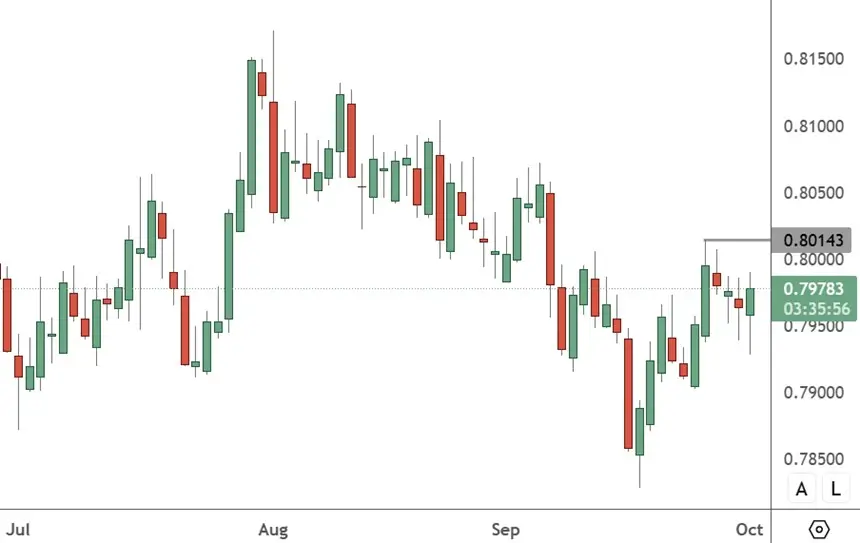The USDCHF exchange rate is looking for further gains, while Swiss consumer price data is due.

USDCHF – Daily Chart
The USD/CHF has resistance at the 0.80143 level and could reach it with favourable data this week.
Swiss consumer price data is released at 14:30 HKT on Thursday, and that has the potential to drive the exchange rate. Markets are expecting a reading of 0.3% after 0.2% last month. A higher inflation number looks unlikely, and a lower number could pressure the central bank to reconsider its recent push back against negative interest rates.
The Swiss National Bank held its key interest rate steady at 0%, but its governor has said that the days of negative rates are unlikely to return soon.
“U.S. tariffs currently represent the biggest downside risk for Swiss economic growth in the short term. However, a SNB rate cut into negative territory is unlikely to address this challenge,” according to Maxime Botteron, UBS economist.
“While a negative policy rate would probably reduce appreciation pressures on the Swiss Franc, we do not believe that it would trigger a substantial depreciation of the Franc sufficient to compensate for the tariffs,” he added.
The U.S. economy was set to release its latest jobs data this Friday, which is important after recent weakness. However, it appears that a government shutdown has delayed the data and other updates over the coming weeks.
The U.S. government shut down most of its operations on Wednesday as deep divisions in Congress have delayed any funding deal. Agencies also warned that the 15th government shutdown since 1981 would halt the release of the closely watched September jobs report, withhold pay from US troops, and lead to the furlough of 750,000 federal workers at a daily cost of $400 million.
Billionaire hedge fund owner Ray Dalio has stated that the U.S. may be approaching a “tipping point” regarding its debt.
According to Bloomberg, Dalio noted that the U.S. will spend about $7 trillion this year and earn only $5 trillion, due to interest payments and roll-over of debt. “This means you have to sell $12 trillion in debt,” he added at the FutureChina Forum in Singapore.
“The market in the world does not have that same sort of demand for that debt, and that creates a supply-demand imbalance,” he said.


